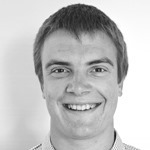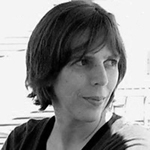TML'ers have their say! #6
In this section we would like to introduce you to our colleagues at TML. That way you get to know us a little better and discover what everyone at TML does. Recently we had a conversation with Saskia, Jeroen, and Stef!
Everyone, welcome to TML! Tell us, how did you come to us?
Saskia: I knew TML for several years from my time at the KU Leuven where I was doing a PhD. In August last year, TML asked if I could support them: they urgently needed a transport economist for ITACA. I was available at that time and could start right away. It was nice to see some familiar faces, because I already knew colleagues Eef and Christophe here.
Jeroen: I had just graduated and I always found traffic very interesting. And then I saw a vacancy from TML and ended up here.
Stef: I already knew TML and saw a vacancy. Things went pretty quickly after that: two hours after my application I had a contract proposal in my pocket. I was especially attracted to TML because they are active in different domains, such as dynamic traffic models (both macroscopic and microscopic) which model very precisely the dynamics of traffic jams.
What is your background?
Saskia: In the distant past I studied physics, but in the end it didn't suit me. After a few wanderings, I ended up at the KU Leuven, where I wanted to do something with the environment. They needed someone there with a math background. I spent half the time developing a model (cost-benefit analyses of high-level investments and infrastructure projects), and the other half I was doing a master's degree in Economics.
Jeroen: I graduated as a bio-engineer from the KU Leuven. Most of my fellow students ended up in food companies, for example to manage labs. Even though the courses were interesting, I had been fascinated by traffic since I was a little child. I used to be able to sit at the front of the Thalys, and as a child I often looked at the structure of the roads while we were travelling around in the car.
Stef: My engineering training allowed me to go in many directions. During an info evening about the master programmes I saw the brand new master's program in Traffic, Logistics, and ITS, and that appealed to me. I was fascinated by the way traffic is described in mathematical formulas and algorithms. Furthermore, the applications are very concrete and socially relevant.
What are you doing on a project-by-project basis at TML?
Saskia: I mainly worked on ITACA; that is a project in the aviation sector. That was new to me. The uptake of new technologies happens only slowly in this sector. We mainly looked at where the problems lay. It was technically quite complicated, there are many market players, natural monopolies. In recent months I have started to work on EPOC. Here we investigate the relationship between energy and transport, with an emphasis on electromobility and biofuels.
Jeroen: I am mainly involved in traffic light regulations in Antwerp. That's great fun: after all, you can effectively see what you've done in the field, and whether it's better or not. And sometimes we are confronted with the difficult trade-off between traffic flow and safety. I am also participating in a study for the redevelopment of the A12 to view all black spots. They want to create tunnels under them, and we do the microsimulations and think about the traffic engineering aspects. With Kristof I also work on “Less Nuisance” projects and we think about how we can adjust things.
Stef: At the moment I am mainly working on the macroscopic dynamic traffic models. We are developing an updated version for Antwerp and with the current version we are supporting Lantis in the construction of the Oosterweel connection.
Interesting! What are the main improvements in that new version?
Stef: The software has basically remained the same, but the modelling of the underlying road network has improved significantly. For example, we encoded over 600 signalised intersections in the model on the basis of signal timing plans, and for about half of these intersections the actual green times were also loaded from the new traffic computer. Moreover, thanks to information from the detectors at these intersections and Telraam, we have many more traffic counts to calibrate the model.
Saskia, something completely different: you live in Aberdeen!?
Saskia: That's right. Aberdeen is a relatively small city. The next major city is Edinburgh in the south, and you have to drive for three hours to get there. We've lived here for nine years; and had started working from home in full corona time. And you know, everything is relatively flat here, but you take the car more often than the bike if you want to go hiking in the mountains which are further away.
And what do you do outside of TML?
Saskia: I do a lot of volunteer work, like at least one day a week, for nature conservation and the Royal Society for Protection for Birds, among other things. I really like being outside, in nature, among the birds.
Jeroen: I play handball, and that is also in competition. I am also a trainer of the university team with students. It is training for beginners as well as for the effective players who play interuniversity matches.
Stef: I have several hobbies, but most of my free time is currently spent on cycling. I am affiliated with two local cycling clubs and participate in several Gran Fondo's in France and Italy every summer. These are competitions for more fanatical recreationists. It requires a lot of preparation if you want to achieve a good result. I regularly train in Luxembourg for this: beautiful roads, hardly any car traffic, and longer slopes than in Belgium.
Thank you for your time, it was a very pleasant conversation, and we wish you a lot of fun working at TML!
Everyone, welcome to TML! Tell us, how did you come to us?
Saskia: I knew TML for several years from my time at the KU Leuven where I was doing a PhD. In August last year, TML asked if I could support them: they urgently needed a transport economist for ITACA. I was available at that time and could start right away. It was nice to see some familiar faces, because I already knew colleagues Eef and Christophe here.
Jeroen: I had just graduated and I always found traffic very interesting. And then I saw a vacancy from TML and ended up here.
Stef: I already knew TML and saw a vacancy. Things went pretty quickly after that: two hours after my application I had a contract proposal in my pocket. I was especially attracted to TML because they are active in different domains, such as dynamic traffic models (both macroscopic and microscopic) which model very precisely the dynamics of traffic jams.
What is your background?
Saskia: In the distant past I studied physics, but in the end it didn't suit me. After a few wanderings, I ended up at the KU Leuven, where I wanted to do something with the environment. They needed someone there with a math background. I spent half the time developing a model (cost-benefit analyses of high-level investments and infrastructure projects), and the other half I was doing a master's degree in Economics.
Jeroen: I graduated as a bio-engineer from the KU Leuven. Most of my fellow students ended up in food companies, for example to manage labs. Even though the courses were interesting, I had been fascinated by traffic since I was a little child. I used to be able to sit at the front of the Thalys, and as a child I often looked at the structure of the roads while we were travelling around in the car.
Stef: My engineering training allowed me to go in many directions. During an info evening about the master programmes I saw the brand new master's program in Traffic, Logistics, and ITS, and that appealed to me. I was fascinated by the way traffic is described in mathematical formulas and algorithms. Furthermore, the applications are very concrete and socially relevant.
What are you doing on a project-by-project basis at TML?
Saskia: I mainly worked on ITACA; that is a project in the aviation sector. That was new to me. The uptake of new technologies happens only slowly in this sector. We mainly looked at where the problems lay. It was technically quite complicated, there are many market players, natural monopolies. In recent months I have started to work on EPOC. Here we investigate the relationship between energy and transport, with an emphasis on electromobility and biofuels.
Jeroen: I am mainly involved in traffic light regulations in Antwerp. That's great fun: after all, you can effectively see what you've done in the field, and whether it's better or not. And sometimes we are confronted with the difficult trade-off between traffic flow and safety. I am also participating in a study for the redevelopment of the A12 to view all black spots. They want to create tunnels under them, and we do the microsimulations and think about the traffic engineering aspects. With Kristof I also work on “Less Nuisance” projects and we think about how we can adjust things.
Stef: At the moment I am mainly working on the macroscopic dynamic traffic models. We are developing an updated version for Antwerp and with the current version we are supporting Lantis in the construction of the Oosterweel connection.
Interesting! What are the main improvements in that new version?
Stef: The software has basically remained the same, but the modelling of the underlying road network has improved significantly. For example, we encoded over 600 signalised intersections in the model on the basis of signal timing plans, and for about half of these intersections the actual green times were also loaded from the new traffic computer. Moreover, thanks to information from the detectors at these intersections and Telraam, we have many more traffic counts to calibrate the model.
Saskia, something completely different: you live in Aberdeen!?
Saskia: That's right. Aberdeen is a relatively small city. The next major city is Edinburgh in the south, and you have to drive for three hours to get there. We've lived here for nine years; and had started working from home in full corona time. And you know, everything is relatively flat here, but you take the car more often than the bike if you want to go hiking in the mountains which are further away.
And what do you do outside of TML?
Saskia: I do a lot of volunteer work, like at least one day a week, for nature conservation and the Royal Society for Protection for Birds, among other things. I really like being outside, in nature, among the birds.
Jeroen: I play handball, and that is also in competition. I am also a trainer of the university team with students. It is training for beginners as well as for the effective players who play interuniversity matches.
Stef: I have several hobbies, but most of my free time is currently spent on cycling. I am affiliated with two local cycling clubs and participate in several Gran Fondo's in France and Italy every summer. These are competitions for more fanatical recreationists. It requires a lot of preparation if you want to achieve a good result. I regularly train in Luxembourg for this: beautiful roads, hardly any car traffic, and longer slopes than in Belgium.
Thank you for your time, it was a very pleasant conversation, and we wish you a lot of fun working at TML!



